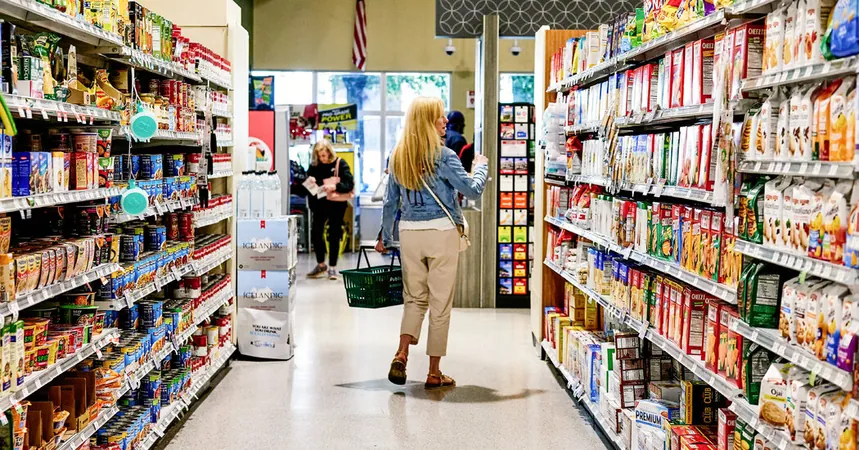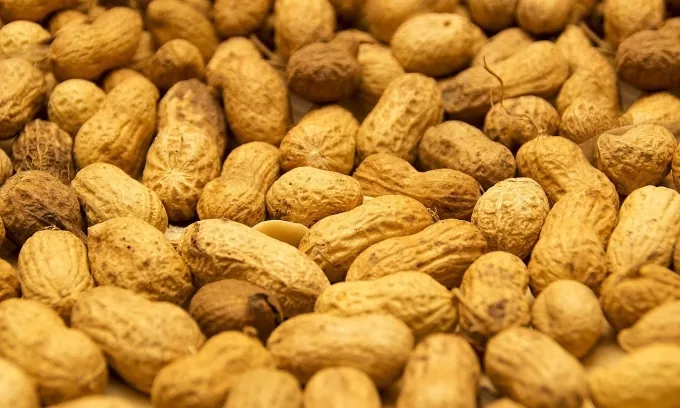
A Turning Point for Ultraprocessed Foods: The Hidden Crisis in America’s Diet
2025-03-27
Author: Mei
In recent months, alarming statistics have emerged revealing that nearly 75% of American adults are classified as overweight or obese.
This troubling trend has spurred significant concern from a variety of sectors, including politics, science, and public health advocacy, as they explore a potential contributing factor: ultraprocessed foods.
Ultraprocessed foods have become a staple in American diets, raising questions about their impact on health and their addictive properties similar to substances like sugar.
Nutrition expert Alice Callahan sheds light on this widening issue, revealing why ultraprocessed foods have infiltrated our meals to such an extent.
Understanding Ultraprocessed Foods
But what exactly qualifies as ultraprocessed? Callahan explains that these foods encompass a vast range of items—anything that is industrially produced and contains ingredients you wouldn't typically find in a home kitchen.
Think of products with long ingredient lists filled with chemicals and additives, which many consumers struggle to even pronounce.
A casual visit to the grocery store can reveal how incorporated these foods are into our shopping habits.
For example, seemingly innocuous products like flavored yogurts, boxed cereals, or even bread may fall into this category once they contain additives that enhance flavor, texture, or shelf life.
Staggeringly, around 70% of the food available in the United States is considered ultraprocessed. This prevalence raises critical questions about health implications, as many consumers unknowingly consume these products daily.
The Rise of Convenience and Cost-Efficiency
The proliferation of ultraprocessed foods ties back to a broader business narrative.
Developed over decades, these foods gained popularity because they are convenient, inexpensive, and designed to have long shelf lives.
As early as the 1900s but particularly after World War II, there was a shift towards convenience that effectively set the stage for ultraprocessed foods’ dominance in our diets.
By the 1980s, ultraprocessed foods represented about 60% of the food supply. This trend has continued to rise, paralleling an increase in obesity rates.
Notably, childhood obesity rates have tripled since the 1970s, signaling a concerning public health issue that extends well beyond individual dietary choices.
Tobacco Companies and Hyperpalatable Foods
An intriguing and unsettling connection exists between the food industry and tobacco companies.
As tobacco companies began diversifying by acquiring food brands, the coinciding rise of hyperpalatable foods—those that were engineered to be extremely appealing and difficult to resist—became more pronounced.
This phenomenon, defined by food scientists, involves combinations of fat, sugar, and salt that create cravings, making it easier for consumers to overindulge.
The ramifications of these changes have had alarming consequences, with research establishing a correlation between the increased consumption of ultraprocessed foods and the rise in chronic diseases such as type 2 diabetes and cardiovascular issues.
The Challenge of Proving Causation
Understanding how ultraprocessed foods impact health involves complex nutritional science.
Proving that these foods are a direct cause of obesity and related health problems is challenging, as many factors—including socioeconomic status, lifestyle choices, and psychological factors—contribute to overall health outcomes.
Recent controlled studies have begun to illuminate these issues more clearly.
For instance, a study conducted by researcher Kevin Hall showed that participants consumed significantly more calories when on an ultraprocessed diet compared to an unprocessed one, reinforcing concerns about their health impacts in a controlled environment.
Looking Forward
The crux of this situation lies not only in recognizing the dangers of ultraprocessed foods but also in public response.
Countries worldwide are beginning to enact measures such as warning labels and marketing restrictions aimed at children.
However, the U.S. has historically lagged behind due to powerful food lobbyists who resist such changes.
Recent political discourse has begun to bring attention to this urgent conversation, with figures from both major parties acknowledging the need for reform in our food systems to combat the growing health crisis.
In conclusion, while the struggle against ultraprocessed foods presents challenges, the growing awareness may encourage significant shifts in policies and consumer habits.
By changing our environment to limit the presence of these addictive foods, there is hope for reversing the tide of the obesity epidemic and improving health outcomes for future generations.
The fight for food justice may just be heating up, prompting consumers and lawmakers alike to consider what’s truly at stake in our diets.





 Brasil (PT)
Brasil (PT)
 Canada (EN)
Canada (EN)
 Chile (ES)
Chile (ES)
 Česko (CS)
Česko (CS)
 대한민국 (KO)
대한민국 (KO)
 España (ES)
España (ES)
 France (FR)
France (FR)
 Hong Kong (EN)
Hong Kong (EN)
 Italia (IT)
Italia (IT)
 日本 (JA)
日本 (JA)
 Magyarország (HU)
Magyarország (HU)
 Norge (NO)
Norge (NO)
 Polska (PL)
Polska (PL)
 Schweiz (DE)
Schweiz (DE)
 Singapore (EN)
Singapore (EN)
 Sverige (SV)
Sverige (SV)
 Suomi (FI)
Suomi (FI)
 Türkiye (TR)
Türkiye (TR)
 الإمارات العربية المتحدة (AR)
الإمارات العربية المتحدة (AR)